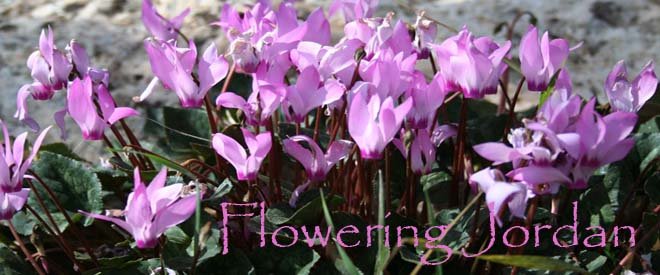Unless one is partial to dry, dusty foliage and the colors brown and grey-green, one must look intently to find autumn beauty in the Middle East. And, that looking is best done in the early morning hours, before the midday day heat and city commotion dulls one's perception of beauty.
Our family practice of jogging three mornings a week affords me the opportunity to enjoy the early morning stillness and coolness in which beauty is more likely to be found. A couple of weeks ago, as we were out for a morning jog, my husband described a small tree to me which we pass at least four times every time we run. I hadn't noticed it before but it caught my husband's eye as it was covered with dew which glistened in the light of the newly risen sun. Dew in Jordan in September is notable.
Even before I saw the plant, I guessed that he had seen a tamarisk tree because of his mention of dew and because of what I remembered learning from my botany professor, Dr. Lytton Musselman, about the tamarisk tree.
I told Dear Husband that I predicted the dew would be salty. It was. Very. I remembered Dr. Mussleman describing the way the tamarisk tree, which is found along the Dead Sea, absorbs salt from the saline soil in which it thrives. Its scale-like leaves secrete this salt. The salt absorbs water at night, which evaporates soon after the sun rises, and in doing so, provides cooler air beneath its branches, making the tamarisk a desirable shade tree for desert dwellers.
It also provides some early autumn morning beauty in an otherwise arid landscape.
The tamarisk is mentioned a few times in the Old Testament; it is first mentioned Genesis 21:33:
"Abraham planted a tamarisk tree in Beersheba and called there on the name of the Lord, the Everlasting God." (English Standard Version)
Pulling Dr.Mussleman's book, Figs, Dates, Laurel, and Myrrh, Plants of the Bible and the Quran,


from my bookshelf, I found more interesting information about the tamarisk tree:
Our family practice of jogging three mornings a week affords me the opportunity to enjoy the early morning stillness and coolness in which beauty is more likely to be found. A couple of weeks ago, as we were out for a morning jog, my husband described a small tree to me which we pass at least four times every time we run. I hadn't noticed it before but it caught my husband's eye as it was covered with dew which glistened in the light of the newly risen sun. Dew in Jordan in September is notable.
It also provides some early autumn morning beauty in an otherwise arid landscape.
"Abraham planted a tamarisk tree in Beersheba and called there on the name of the Lord, the Everlasting God." (English Standard Version)
Pulling Dr.Mussleman's book, Figs, Dates, Laurel, and Myrrh, Plants of the Bible and the Quran,
from my bookshelf, I found more interesting information about the tamarisk tree:
- The hard durable trunks of the tarmarisk were used in the fortification of Masada.
- King Saul held court under a tamarisk (I Samuel 22:6) and was buried under a tamarisk (I Samuel 31:13).
- The tamarisk is mentioned in the Qu'ran in reference to a judgement which leads to desertification (Sura 34:15-16, Ali).
And here is an interesting article as to why the tamarisk, with its affinity for alkaline soils and incredibly long taproots, is an unwelcome stranger in the western United States.
+of+March+2007+045.jpg)



















